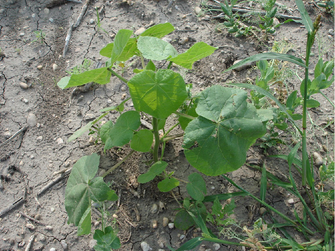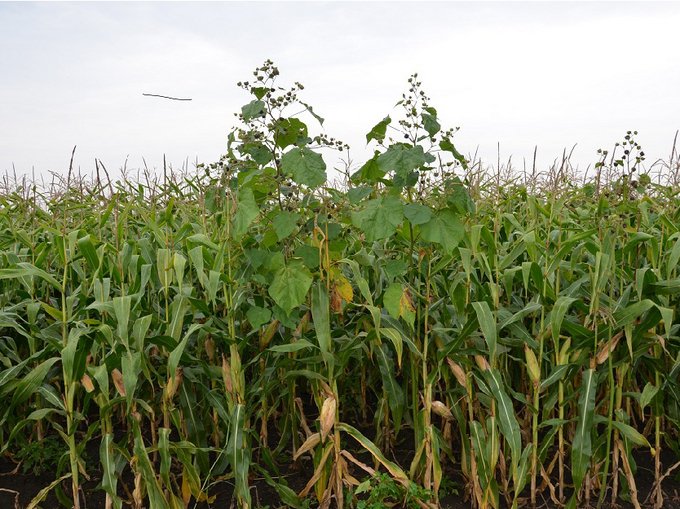Velvetleaf
Abutilon theophrasti
Appearance
The cotyledons of the velvet poplar are obovate, long-stalked, with entire margins, and light green.
The stem is erect, velvety-haired, rarely branched, and the species reaches a height of 0.8 to 1.5 m. The leaves are long-stalked, broadly cordate with a taper toward the tip, flat and round-toothed, and characteristically velvety-hairy. The flowers are yellow, solitary or in small clusters in the leaf axils (about 1.3 to 2.5 cm across). The seed capsule is light green at first, later it appears almost black. The seeds are hard-shelled, dark brown, kidney to heart-shaped and flattened.
Seed production is high, as about 70-200 capsules are formed per plant with about 35 seeds per capsule. The seeds can survive in the soil for several decades.




Distribution
The velvet poplar is heat-dependent and prefers moist soils that are well supplied with nutrients. Larger populations of the velvet poplar are currently found in Upper Austria (district of Eferding, rarely Alpine foothills), in Burgenland (Neusiedl am See), sporadically in Lower Austria (Vienna Basin) and in southeastern Styria.
Spread
The velvet poplar originates from China (Asia) and probably reached Europe through contaminated yellow mustard and oil radish seed as well as animal feed. The current pattern of spread suggests that seeds are repeatedly carried from one area to the next by harvesters or tillage equipment. Velvet poplar will most likely continue to spread in agriculture.
Economic importance
Velvet poplar has many characteristics of an "ideal" weed: long and uneven germination (mid-April to sometimes mid-June), continuous and high seed production, high competition for the growth factor light, high phenotypic plasticity and regenerative ability after a herbicide application, and tolerance to drought. Due to the high competitiveness of velvet poplar, sensitive yield losses can occur and, in addition, harvesting can be hindered by velvet poplar fibers.


Prevention and control
- Closely monitor arable land and consistently remove individual plants - before flowering and from the very beginning
- Avoidance of the spread of diaspores
- Chemical control with plant protection products (see list of plant protection products approved in Austria)
Last updated: 04.09.2024
automatically translated